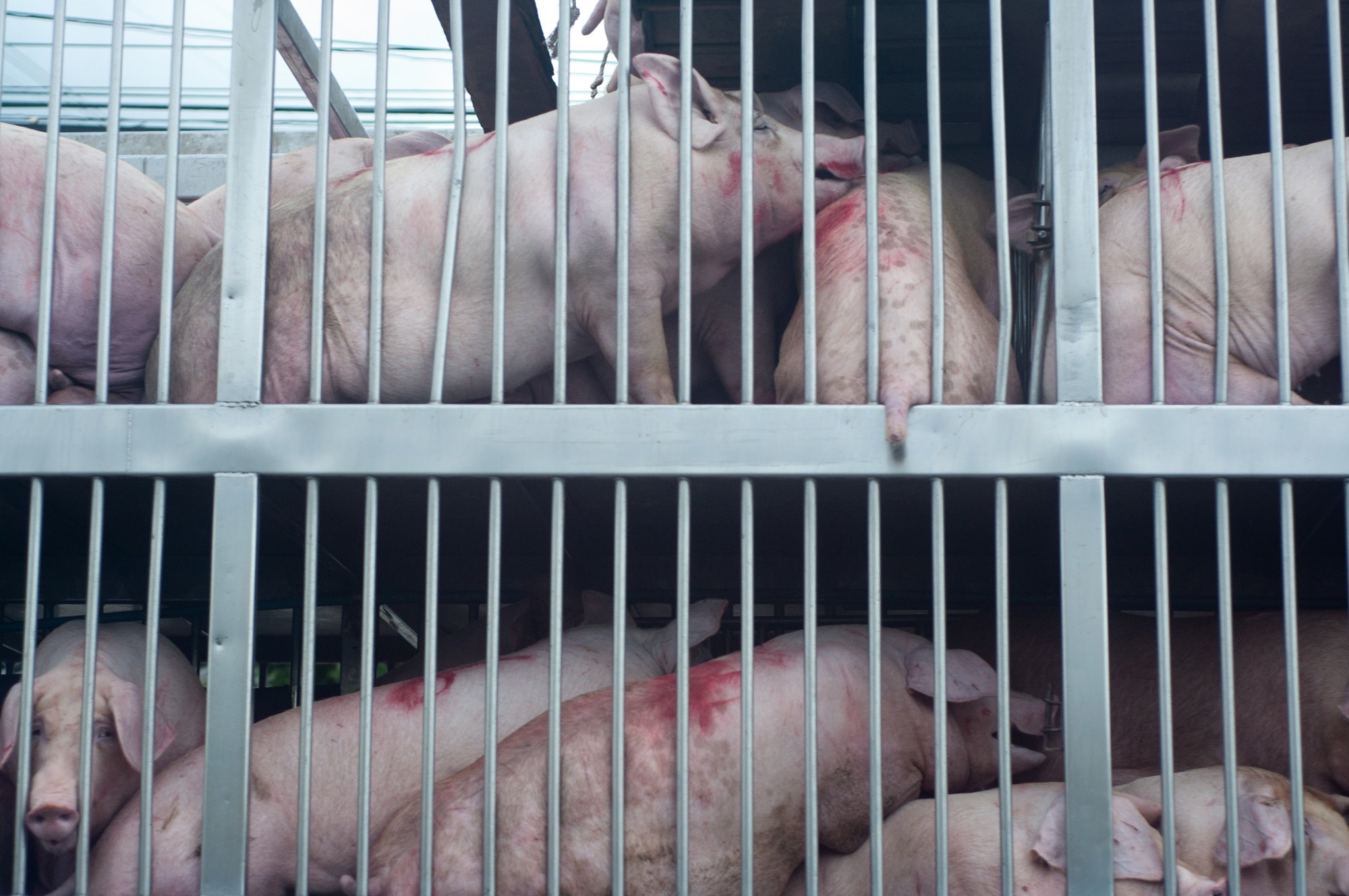In a paper published in the journal Animals, researchers investigated sensor technology and artificial intelligence (AI) to address the time-consuming manual scoring of animal-based measures (ABMs) in meat inspection, focusing on poultry, pigs, and cattle. They conducted a comprehensive review of ABMs, examining their applications in conjunction with sensor technology, and analyzed Dutch Regulatory Authority (RA) guidelines, as well as European Union (EU) mandates governing meat inspection by official veterinarians (OV). The study suggests the potential for the RA to enhance inspection processes and assess animal welfare risks but highlights the need for external validation of commercially available systems.
 Study: Advancing Animal Welfare Inspections in Slaughterhouses with Sensor Technology and AI. Image credit: sideroad/Shutterstock
Study: Advancing Animal Welfare Inspections in Slaughterhouses with Sensor Technology and AI. Image credit: sideroad/Shutterstock
Background
This study sheds light on the critical issue of animal welfare inspections within slaughterhouses, particularly in the Netherlands, where a staggering number of animals are processed annually. The high-speed and large-scale nature of slaughterhouse operations makes it challenging for humans to effectively evaluate and address animal welfare concerns, a problem exacerbated by frequent reports of issues affecting animal welfare. While existing legislation and industry efforts aim to mitigate these concerns, animal welfare problems persist throughout various stages of the production chain.
Animal Welfare: Sensor Tech & AI
Sensor technology can measure only a fraction of the many ABMs that are trackable. Researchers have conducted limited studies in slaughterhouse settings, and they rarely find comparisons between sensor-based assessments and real-time human observations. EU legislation currently hinders the full integration of sensor technology, primarily due to open standards in animal welfare laws.
Nevertheless, sensor tech and AI can enhance inspections and risk assessments but can only replace human inspectors partially due to their simultaneous limitations in detecting multiple anomalies. Further research, legislative changes, and slaughterhouse collaboration are needed to utilize this technology for animal welfare inspections fully.
Methodology
The study conducted a two-part literature search to identify relevant information. The first part was searching PubMed in September 2022 to determine ABMs related to animal welfare in slaughterhouses and those already part of current meat inspections. The researchers compiled an overview of ABMs recorded at slaughterhouses for various livestock categories, categorizing them according to welfare principles. They reviewed the relevant legislation and work instructions of the Netherlands Food and Consumer Product Safety Authority (NVWA) concerning the utilization of ABMs for assessing animal welfare during meat inspections at slaughterhouses in the Netherlands.
In the second part, conducted in February 2023, the study concentrated on identifying applications in which sensor technology and AI measured these ABMs. The second part analyzed sensor technology and AI applications to measure the identified ABMs, focusing on non-invasive and practical methods feasible at slaughterhouses. Researchers identified commercially available applications and systems used by RA. Additionally, expert consultations, website visits of meat processing companies, and attendance at relevant conferences and webinars contributed to the identification of applications. The identified applications were categorized based on their developmental phase: research settings, practical research conditions on farms or slaughterhouses, or commercially available solutions.
Slaughterhouse ABMs Overview
Slaughterhouse ABM Metrics: Researchers identified 37 ABMs for broilers and laying hens, 32 for cattle, and 41 for pigs that can be recorded at slaughterhouses, including still images, moving images of the animal, and sounds. These ABMs are categorized based on Welfare Quality principles.
Recording by the Dutch RA: The Dutch RA follows specific red meat and poultry slaughterhouse procedures. ABMs are assessed by the OV during the arrival and ante-mortem (AM) inspection for red meat slaughterhouses, focusing on animal health and safety. Poultry also registers additional ABMs, including footpad lesions and injuries related to catching and transport.
ABM Recording - Sensor Tech & AI: Researchers have developed various technologies for recording ABMs in livestock at slaughterhouses, encompassing body weight and size measurements and the analysis of vocalizations. Some systems are commercially available, while others are still in the research phase. For example, European pig slaughterhouses have implemented procedures for recording ear- and tail injuries, lung abnormalities, and movement after stunning.
Validation: Validating sensor technology combined with AI is crucial for reliability. However, there has yet to be a consensus on validation methods within the scientific community or regulatory authorities. External validation, which uses independent datasets, is preferred, but only a limited number of commercially available systems have undergone external verification, with approximately 20% having validation studies published.
Legal Barriers: Legal barriers, primarily from existing EU legislation, limit the RA's ability to integrate sensor technology and AI into slaughterhouse meat inspections. These barriers result from requiring official controls to be conducted by OV or under their supervision. Although exceptions exist for poultry post-mortem inspections, new control systems for other animal species must gain approval from the EU Commission and member states.
Additionally, qualitative open standards in animal welfare legislation present challenges, as they lack established target values for sensor-based assessments. In contrast, quantitative goal-oriented measures offer more opportunities for utilizing sensor technology and AI in animal welfare enforcement by setting specific limit values in the law, such as those related to stunning and animal consciousness.
Conclusion
To summarize, this study explored the potential for using sensor technology and AI to assess animal welfare indicators at slaughterhouses for regulatory purposes. It identified various ABMs recorded at slaughterhouses, some of which these technologies can measure, although researchers have conducted limited research in slaughterhouse settings. Sensor technology and AI offer opportunities for assessing carcass abnormalities and group behaviors. Still, they need help to fully replace human inspectors due to legal barriers and the need for external validation. Nevertheless, these technologies can enhance regulatory inspections and provide valuable insights into slaughterhouse animal welfare risks.